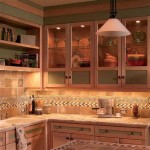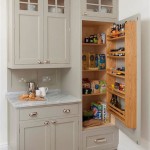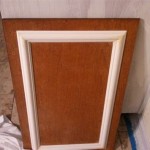How to Paint Over Cabinets Without Sanding
Painting over cabinets without sanding can seem like a daunting task, but it's entirely possible with the right preparation and materials. Follow these steps to achieve a professional-looking finish without the hassle of sanding.
1. Clean and Degrease
Thoroughly clean the cabinets using a degreasing cleaner. This will remove any dirt, grease, or grime that could interfere with the paint's adhesion. Allow the cabinets to dry completely.
2. Use a Bonding Primer
Apply a high-adhesion bonding primer specifically designed for painting over cabinets. This primer creates a strong bond between the existing finish and the new paint, ensuring a durable finish.
3. Choose the Right Paint
Select a paint specifically designed for painting over cabinets without sanding. These paints contain adhesion promoters that help them bond to different surfaces without the need for sanding.
4. Thin the Paint
Thinning the paint slightly with water will make it easier to apply and flow more smoothly over the cabinets. Follow the manufacturer's instructions for the correct thinning ratio.
5. Use a Roller and Brush
For most cabinets, a combination of a roller and a brush works best. Use a roller for the flat surfaces and a brush for the edges, corners, and hardware. Apply thin, even coats, allowing each coat to dry before applying the next.
6. Use a Smooth Roller
Invest in a high-quality roller with a smooth nap (microfiber or foam). This will help prevent the roller from leaving texture or brushstrokes on the surface.
7. Feather the Edges
When painting the edges of the cabinets, use a brush to gently feather the paint onto the existing finish. This will help create a seamless transition and prevent sharp edges.
8. Remove Hardware
For a cleaner finish, it's best to remove any hardware, such as knobs and handles, before painting. This will allow you to paint around the holes more easily.
9. Protect the Floor
Place a drop cloth or plastic sheeting on the floor around the cabinets to protect it from paint drips.
10. Allow Ample Drying Time
Allow the painted cabinets to dry thoroughly before using them. It may take a few days for the paint to fully cure and reach its maximum hardness.

Can You Paint Kitchen Cabinets Without Sanding

How To Paint Kitchen Cabinets Without Sanding Sustain My Craft Habit

How To Paint Cabinets Without Sanding

Diy How To Paint Cabinets Without Sanding Vlog

How To Paint Bathroom Cabinets Without Sanding 8 Vital Steps Grace In My Space

Painting Over Oak Cabinets Without Sanding Or Priming Hometalk

How To Paint Kitchen Cabinets Without Sanding The Budget Decorator

How To Paint Fake Wood Kitchen Cabinets Simple Made Pretty 2024

How To Paint Cabinets Without Sanding A Fresh Squeezed Life

How To Paint Kitchen Cabinets Without Sanding Or Priming
Related Posts








